This week, I watched “Children of Men” directed by Cuaron in 2006 and “Laura” directed by Preminger in 1944. Compared to last week, where I focused on the visuals and how the film looked, this week, I paid closer attention to mise-en-scene and staging. Both of these concepts focus on the placement and movement of the actors inside the frame of the camera. In short, I inspected the “behind-the-scenes” work of the filmmakers and how they managed their actors.
Children of Men
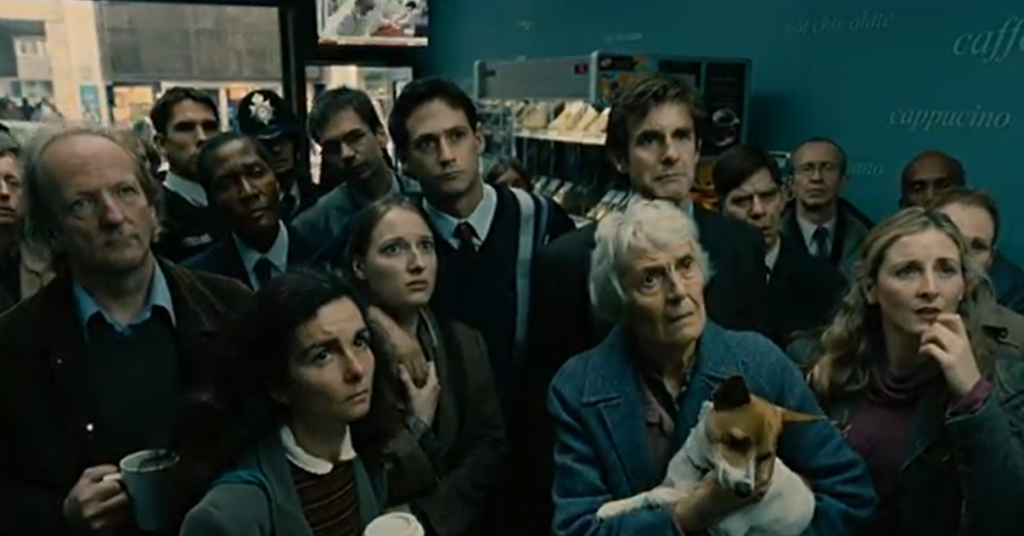
In The Last Detail, it is explained that staging is “the way actors are arranged inside the frame and the way they move through it.” The staging in the opening scene is very prominent. The news is playing in the background as all the actors in this frame are huddled together in a crowded room. They’re all looking at the same spot to depict that they’re looking at a screen and watching the news before the camera even shows it.
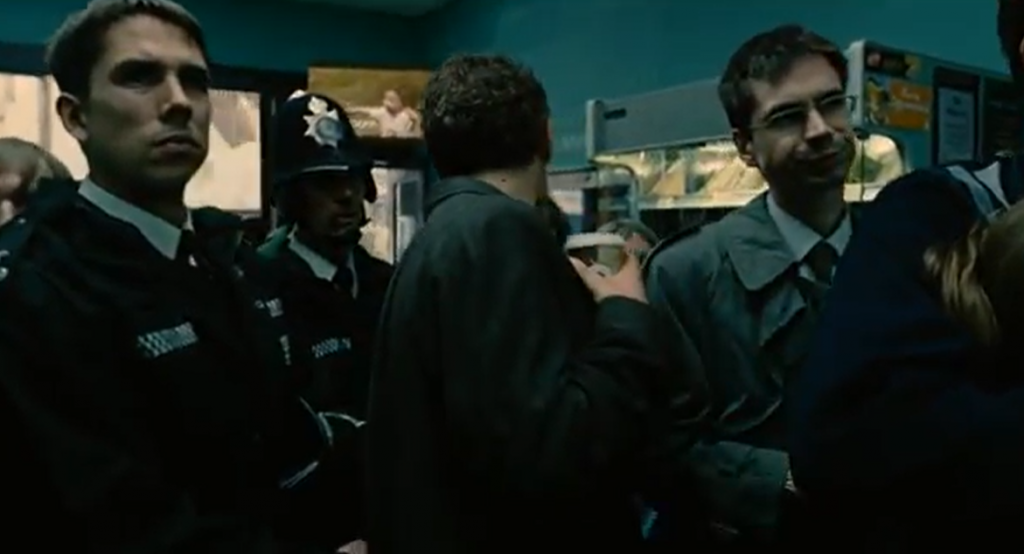
While the actors remain staring at the screen, a man makes his way through the crowd to get to the front. This portrays that he is important, most likely the lead. As he’s leaving, the actors shift and make room for him to exit.
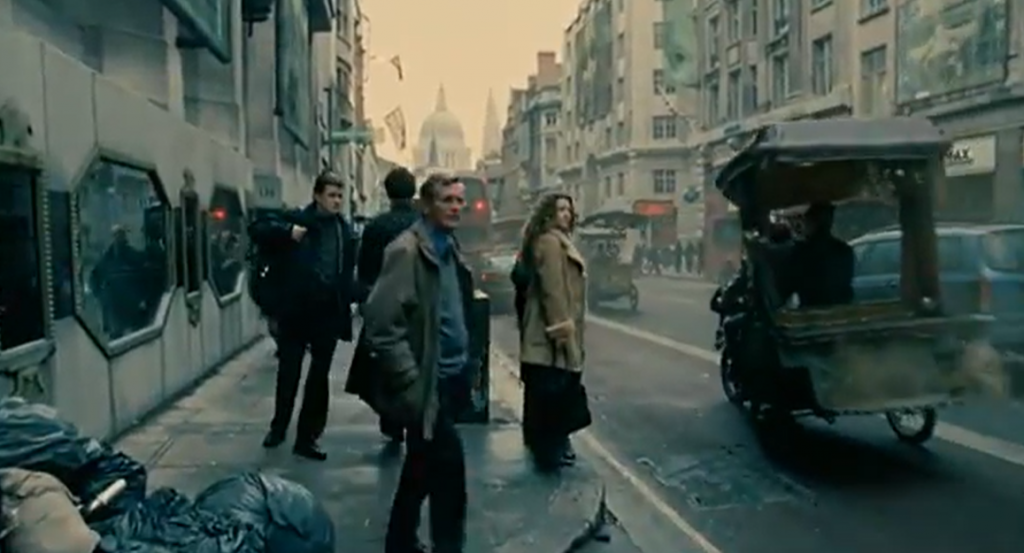
Mise-en-scene is a French term, and The Last Detail states that it encompasses “all the factors that the director could control during shooting—the performances, the blocking, the lighting, the placement of the camera…” In this frame, the set is quickly established. The camera stays at the same height while the actors and cars move around the lead. A lot is happening while the actor is only walking along the sidewalk to show that he’s in a busy city.

The camera and lead walk into an office, and all the computer screens are showing the same news. The repetition of each following screen displaying the same thing shows that that’s all that people are worried about right now.

The actors outside the train are throwing rocks and scraps at the train. This implies that they’re terrorists. Theo is close to the camera and in full focus. He also tenses up as the rocks hit the window to capture that he’s scared.

The placement of actors in this frame is important. The soldiers are outside the confined cages, and the civilians are trapped inside like animals.
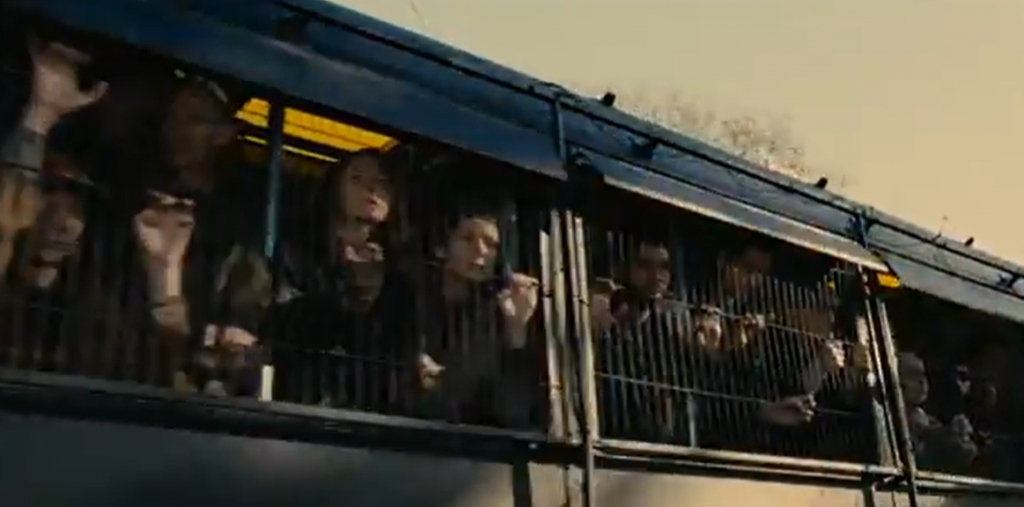
Similar to the shot above, Jasper says “Illegal immigrants”, then the camera pans to the bus carrying people in a cramped space. The actors are gripping the bars to show that they’re indeed “trapped like animals”. All their expressions are torn to portray that they’re scared.
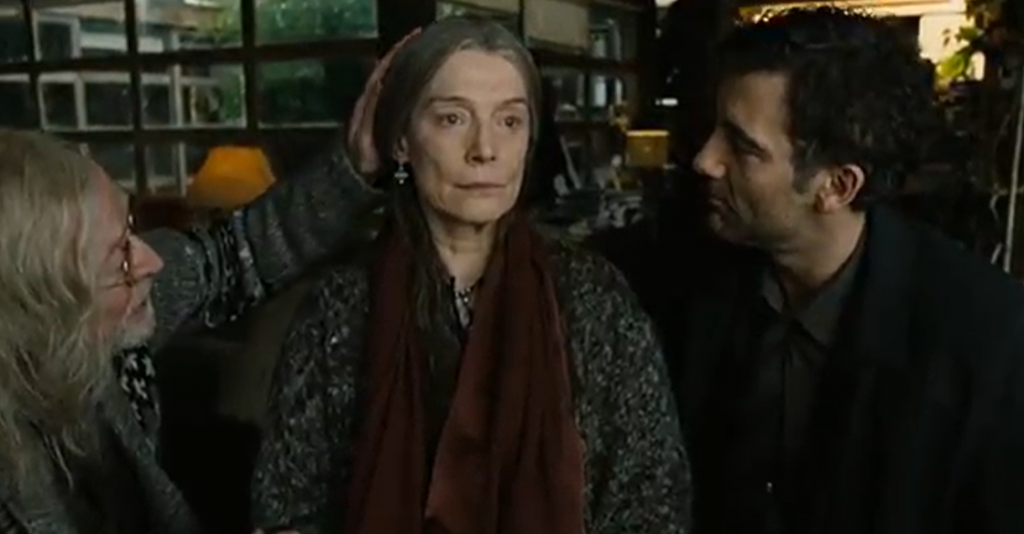
The staging of this scene shows that Jasper and Theo are there for the woman in the middle. She has a faraway look in her eyes to show that she’s not mentally present. Then the camera cuts that older actor out of the frame and zooms in on these two looking at the photograph off screen that shown afterwards.


The repetition of “Quietus” implies that this is important, or they’re simply sponsoring something. We don’t know what it means yet, but the close-up first makes it blaring, and I didn’t really pay attention to it until I saw it a second time at a different distance and learned that it was product placement rather than the news broadcast.
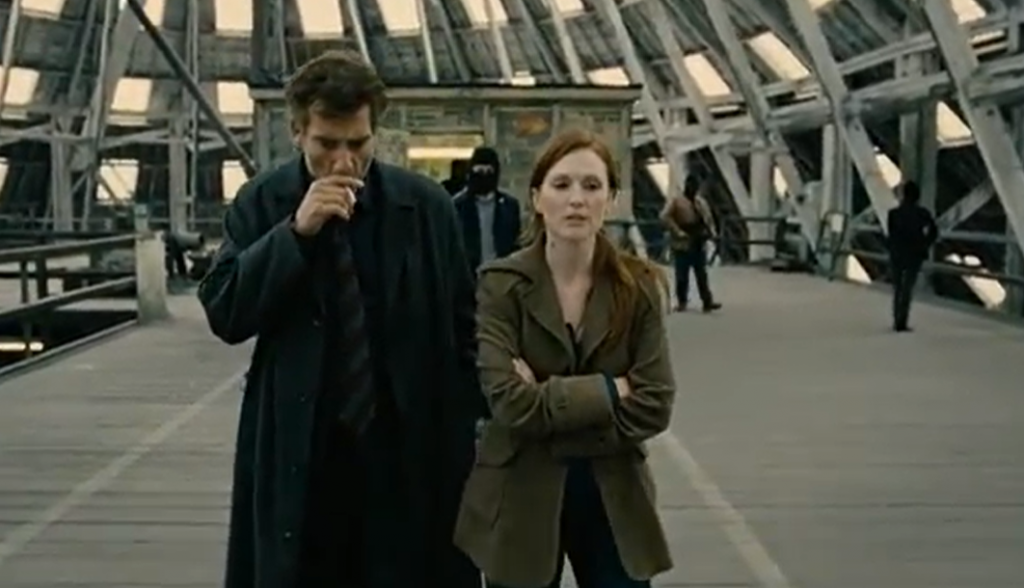
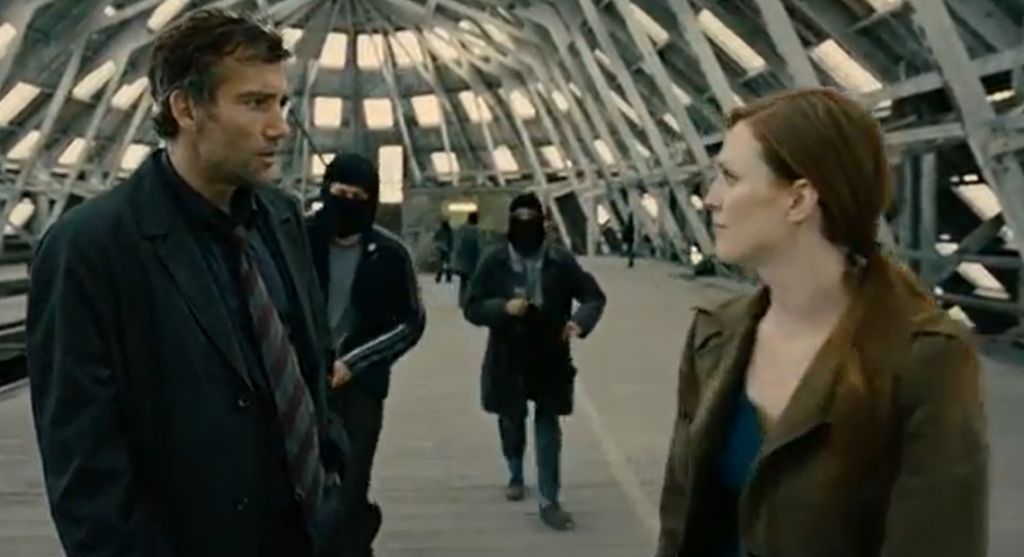
The staging here shows the gangsters staying behind these two actors while they walk. There are a few extra actors scattered around to show that the male lead can’t go anywhere if he tries to run. She’s walking away while the two gangsters in the back approach quickly. She leaves the frame, and those two are no longer in the background.

In this shot, the highlighted word is “repent”, and the yellow hoodies are brought to attention because it’s the only bright color in the frame. After noting the yellow color, your eyes are caught on the word “repent”. The word is repetitive and in different fonts and sizes to enforce the group’s message.
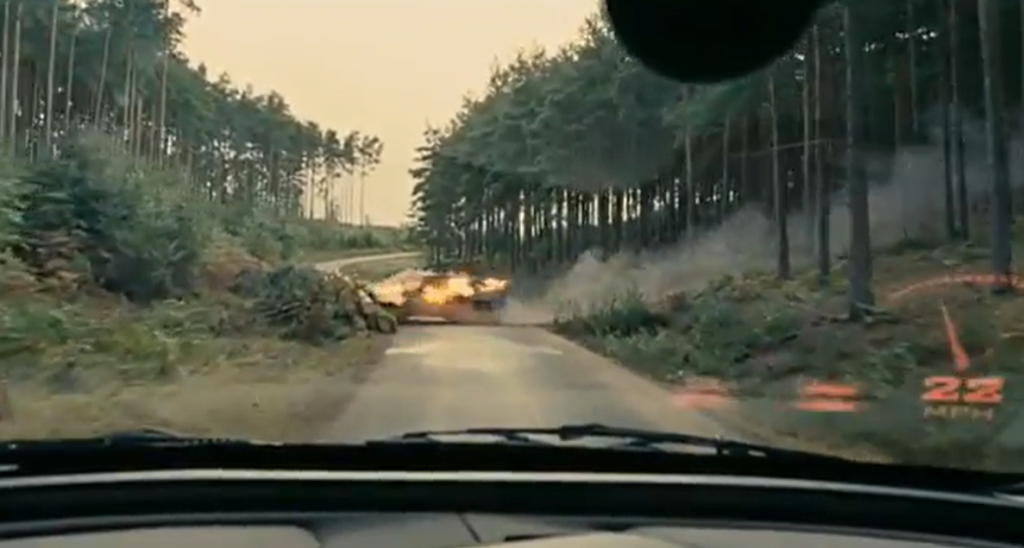
The mise-en-scene in this scene is that the director set this car on fire and let it go. The actors have to be careful about not getting too close to this because 1. that’s not the goal of the scene, 2., the actors would be in danger if they hit the car. Following this scene, there are a bunch of motorcyclists and attackers that the actors in the car are trying to evade. The staging of that scene is crowded and action-packed, and it makes you worry for the characters.
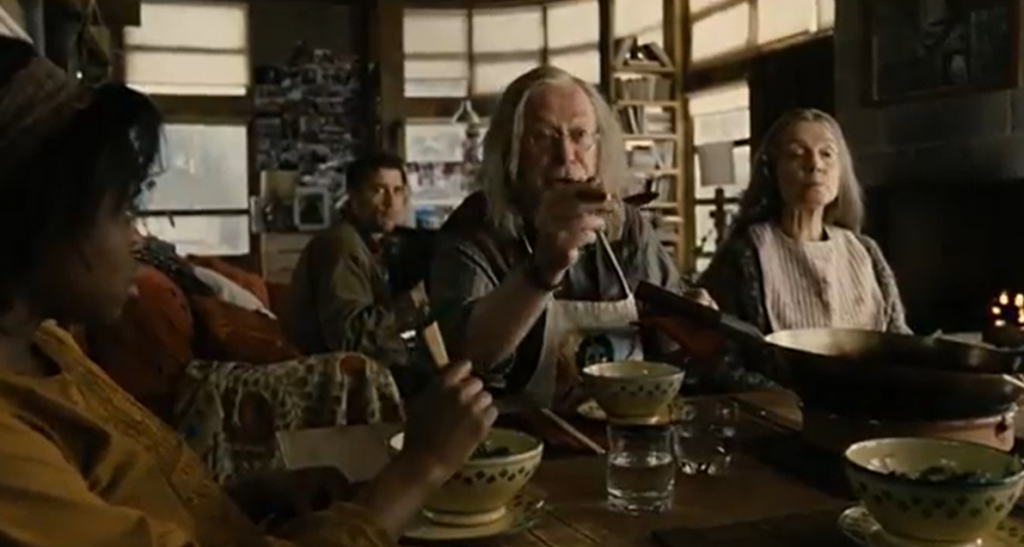

In The Last Detail, it’s stated that “One actor stands in the foreground, say, drawing emphasis. Another actor is diminished by being placed in the background. As they talk, power relationships may shift, and they may switch places.” This can be seen right in these two shots. In one, Theo is in the background, signifying that he’s not important to the scene. But in the next shot, they’re talking in the background, and he’s in focus and close to the camera, but he’s not talking.
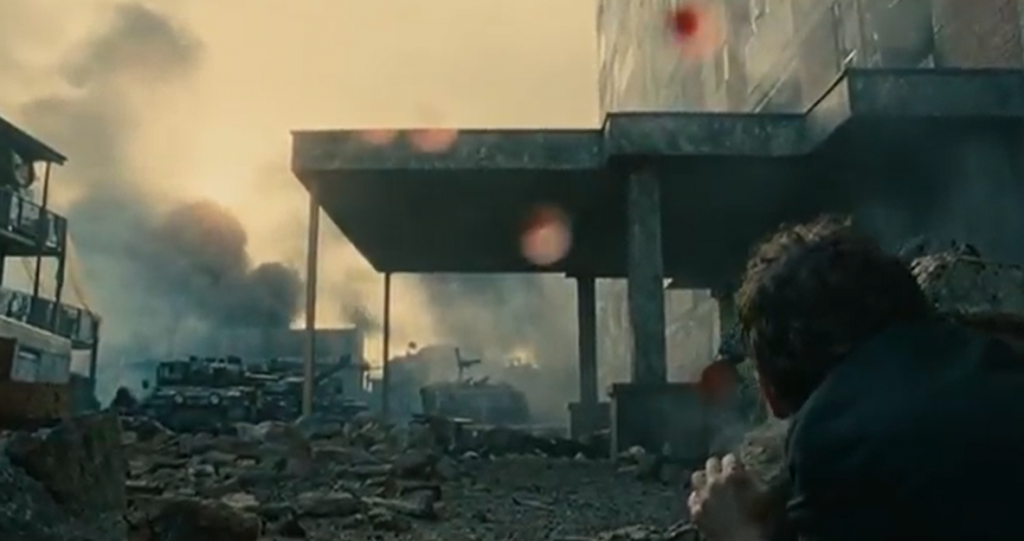
I found this whole sequence intriguing because the director put red spots on the camera lens to emulate blood. It explains that the war is very bloody and dangerous. The actors is also crouching in fear because he’s scared and frightened by the bombing.
Laura
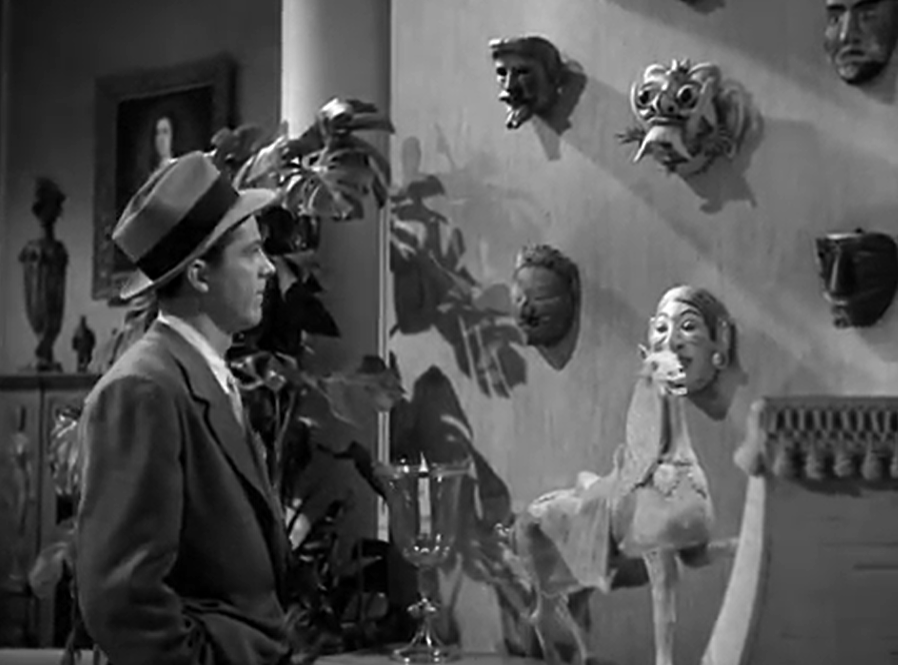
The movie begins with the camera panning across the apartment to set the stage and reveal to the audience where the character is. The actor is standing tall and staring at the wall.
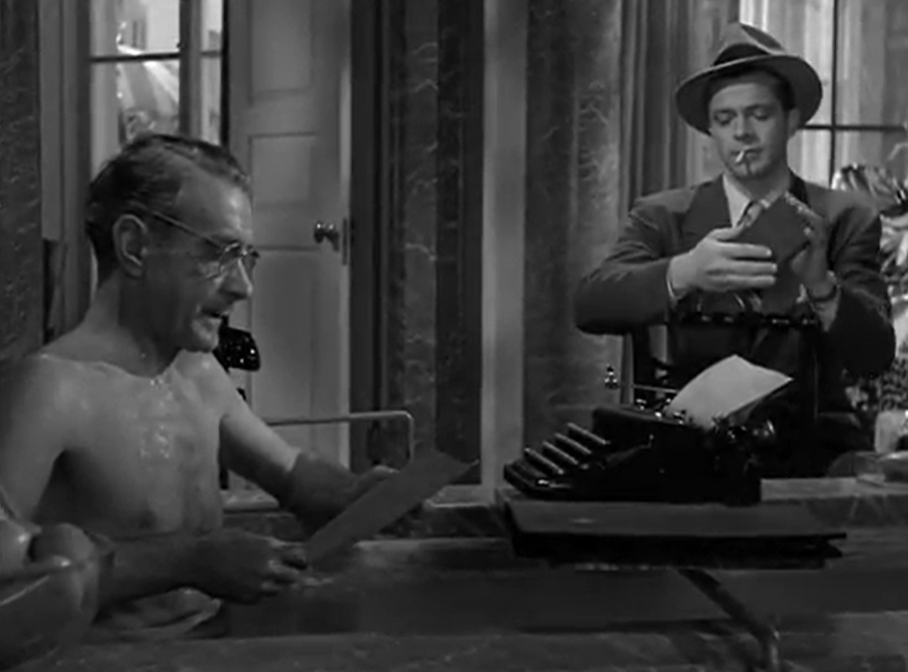
I find the Mise-en-scene interesting here. Although the actor is shown bathing, the placement of the typewriter above the water and the paper in the actor’s hands expresses that the character is doing anything but relaxing.
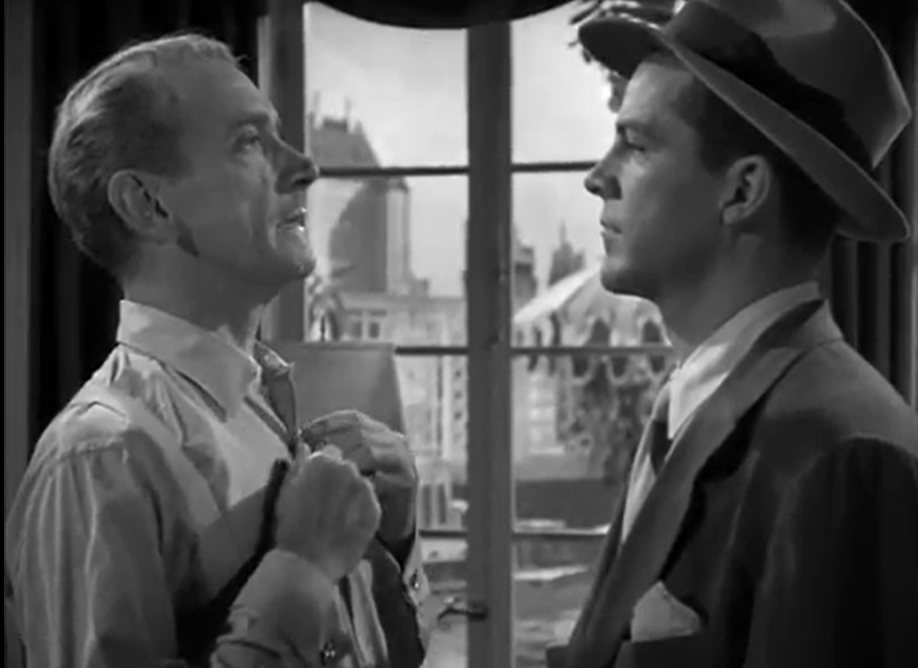
The actors are positioned standing across from each other with both of their chins held high to depict that they are serious about the topic they’re discussing. The fact that they’re eye-level shows that they are each other’s match. They have the same expertise for the case. They’re also looking at each other as if they’re about to battle.

Both characters are standing the same way and reading something. Except McPherson is ahead, closer to the camera, to show that he’s in charge of the case.
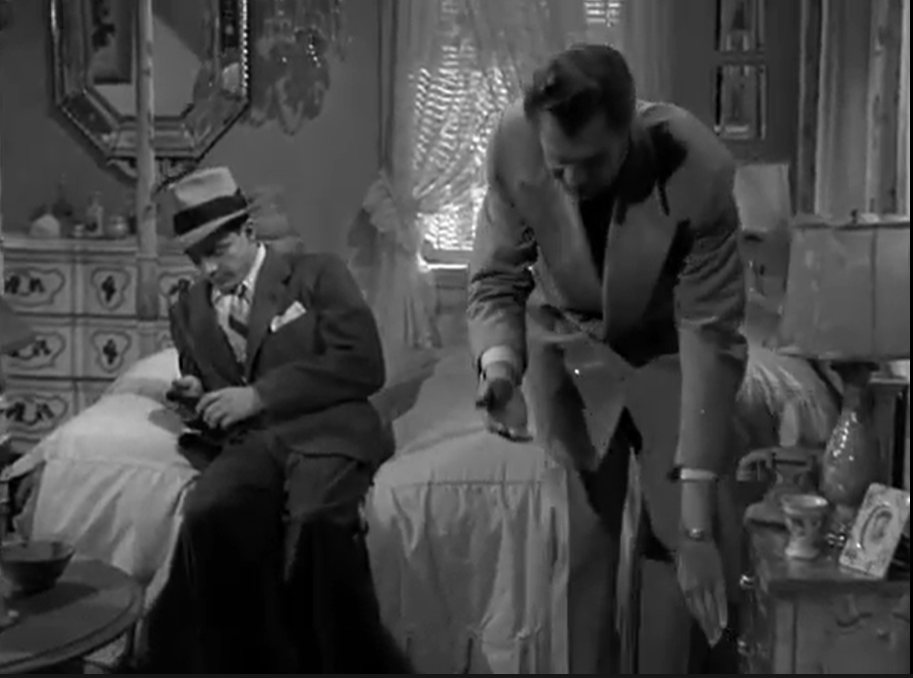
Most times, McPherson is in the frame with another character, he is disinterested and not paying attention to anything but the puzzle in his hands. But when he’s alone in a shot, he’s opening drawers and looking for clues. This shows that either he’s figured out the case or he finds others incompetent.
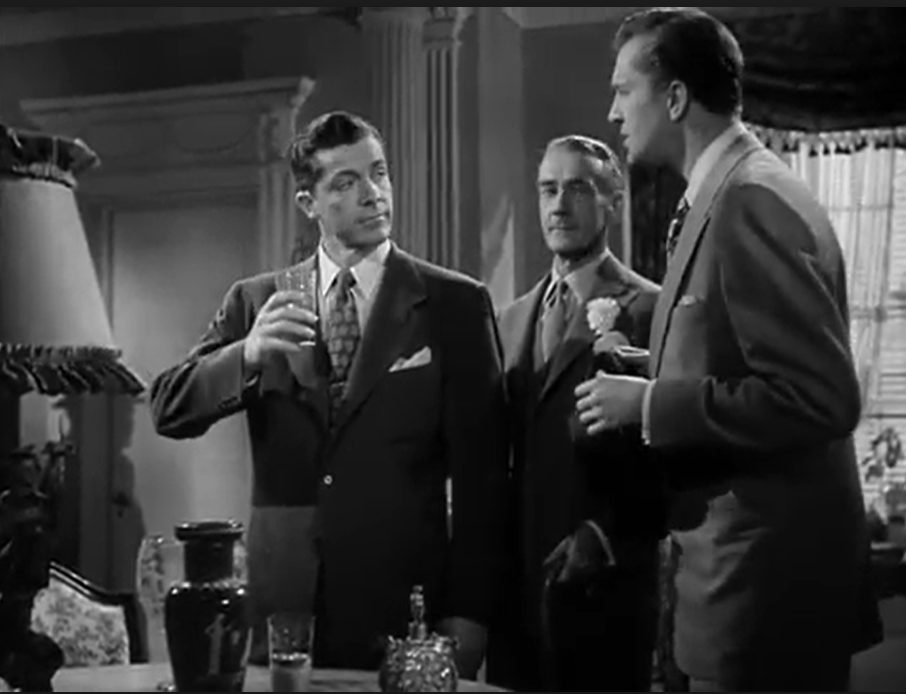
Carpenter whizzes into the frame so fast after McPherson says he has to go to headquarters. He says, “I don’t understand, you sent for me,” but I think he’s deflecting, and this depicts that he’s guilty.

In this shot, McPherson pulls out the puzzle and starts playing with it again. He’s not worried about what Lydecker has to say, and, simply put, he does not care. Ha ha
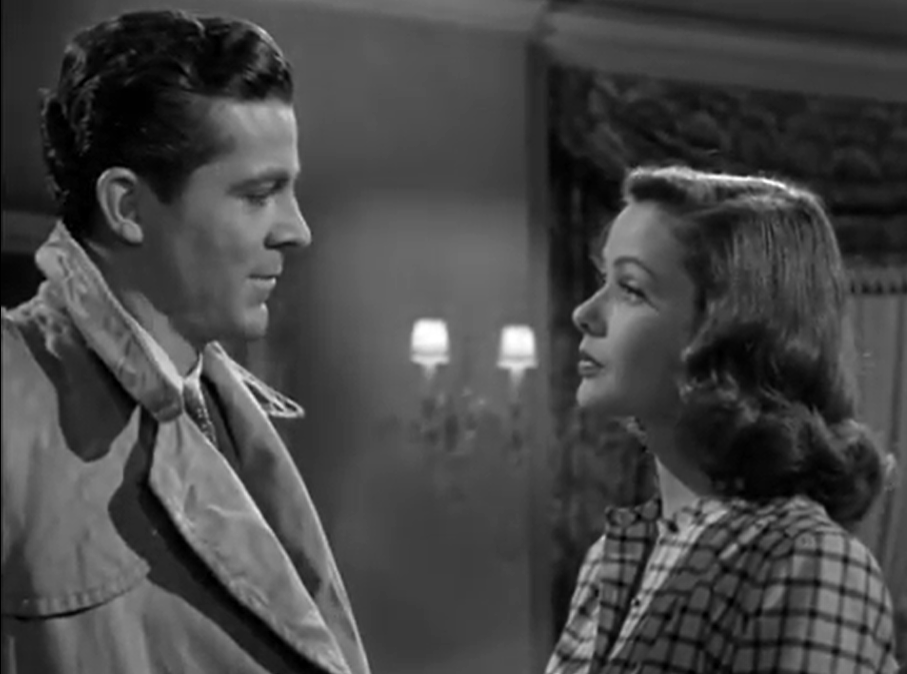
He asks Laura what she decided regarding her marriage to Carpenter, and after she says she decided not to, a small smile appears on his face, expressing that he’s happy with her answer.
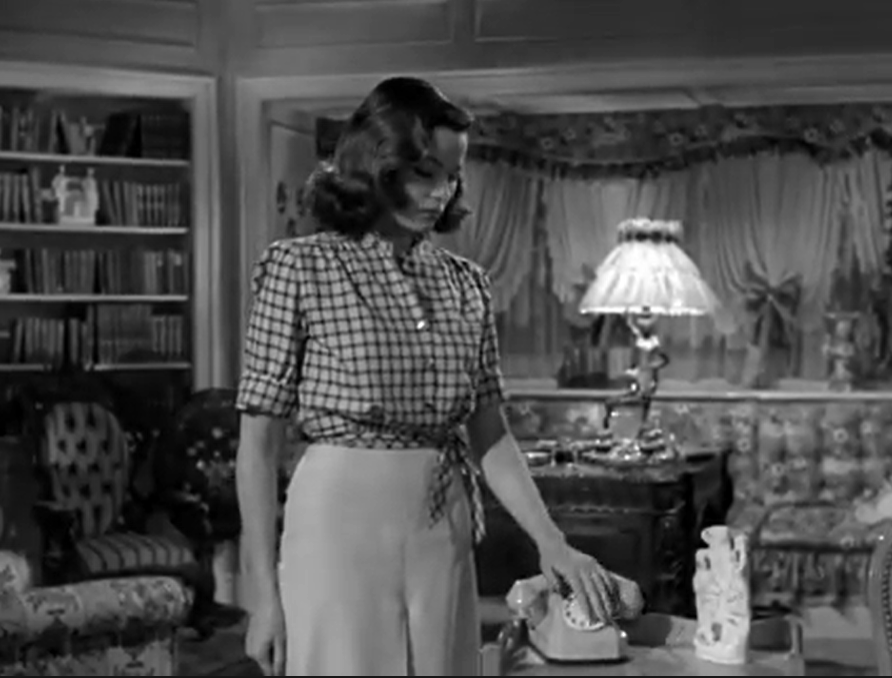
The staging of this frame, with the actress’s hand on the phone, shows that she wants to call her friends, but she won’t because McPherson has asked her not to. She’s keeping her promise despite not wanting to.
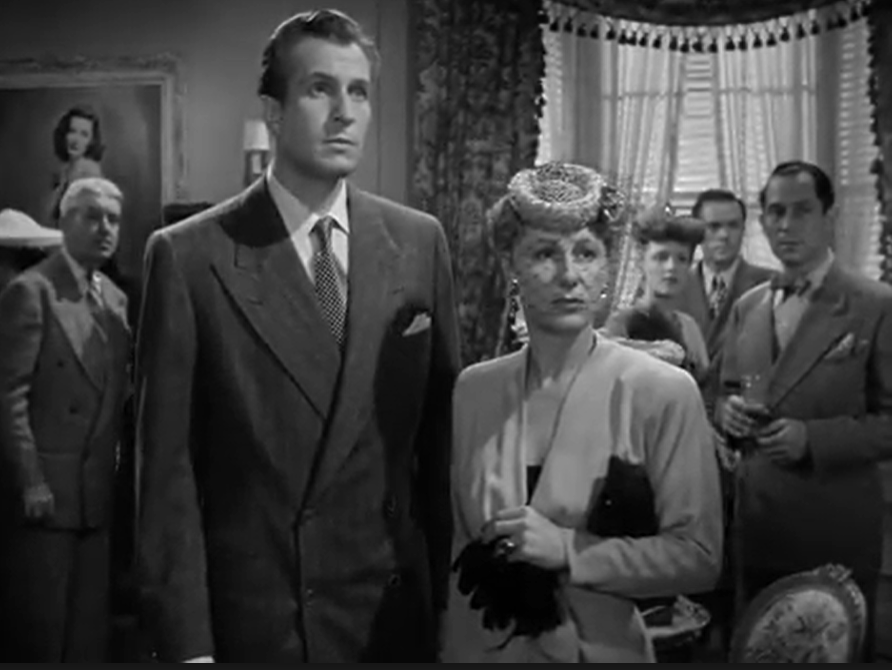
After McPherson says, “I told you I’d bring in the killer today”, the camera cuts to these two in the center of the frame, looking guilty, explaining to the audience that the killer is either both of them or one of them. All the other actors in the background are looking at McPherson because they’re shocked by the declaration.
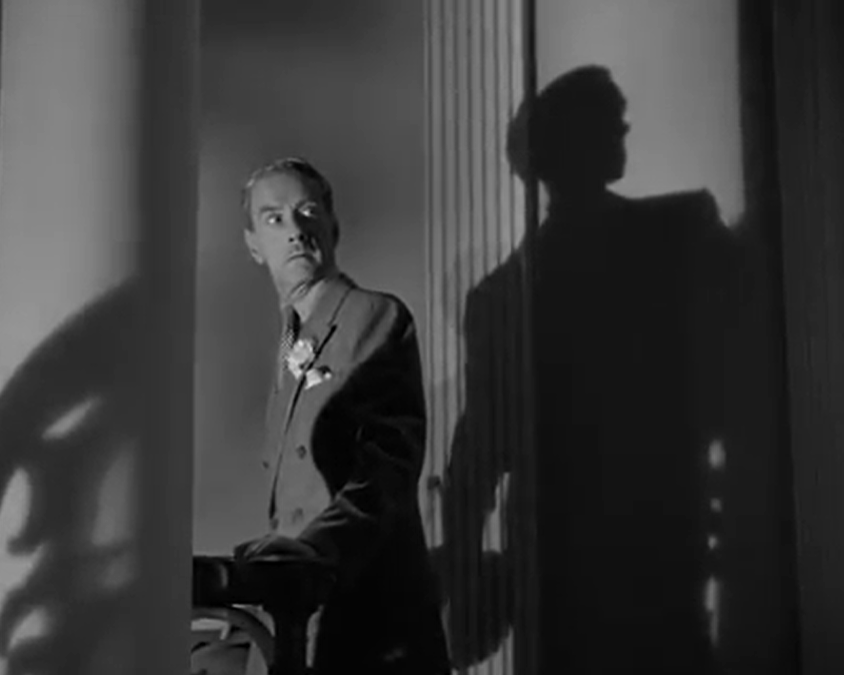
I really liked this shot because even though Lydecker is looking diagonally and basically facing the camera, his shadow is looking to the side in the direction of the room he’d just exited.
To summarize, throughout these two films, I focused on determining the different ways mise-en-scène and staging were modelled by the different directors. I feel like the representations between the two films were very different because “Children of Men” was filmed in 2006, while “Laura” was directed in 1944. With such a big time gap, it is natural for the art and style of filming to change. The storylines were also quite different and each belong to completely separate genres. “Children of Men” had a more dystopian feel to it with themes of war and violence, and “Laura” is categorized as a “Noir/Mystery”. The topics are so vastly different that the depictions of staging and mise-en-scene in the films are bound to look different as well.

Leave a Reply to Alana Manrique Cancel reply